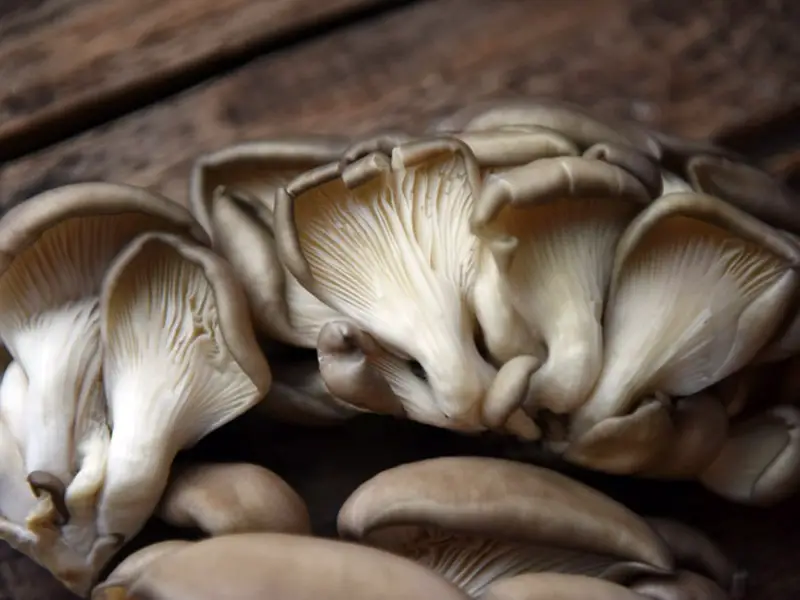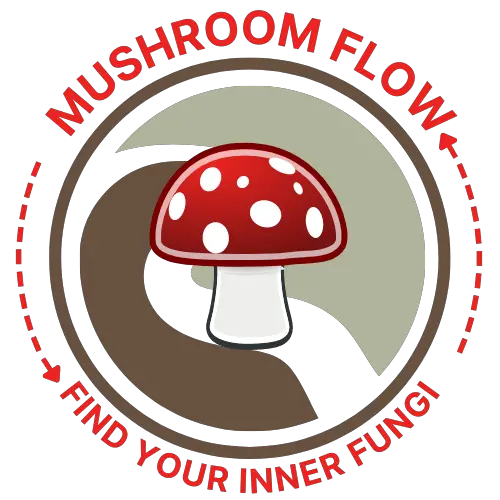Wait, did I buy yellow oyster mushrooms at the market? Nope, I bought white Pearl oyster mushrooms. So what happened to turn this mushroom batch yellow?
Oyster mushrooms come in a variety of colors but Pearl oysters are either a light gray or grayish brown. Sometimes their caps can turn a yellowish color. So are they spoiled, inedible, or damaged?
Oyster mushrooms can turn yellow from drying out if they are in an environment with insufficient humidity. That’s not to say that all yellow oyster mushrooms are abnormal. Golden oyster mushrooms are naturally yellow. But for the other varieties, yellowing may be an indication that the mushrooms have begun to dry out.

Read on to learn about the sort of things that make oyster mushrooms turn yellow, and what to do if your oyster mushrooms are rocking that amber hue.
Are Yellowed Oyster Mushrooms Edible or Are They Rotten?
Oyster mushrooms have a soft and silky texture that’s great on the palate but doesn’t do well if kept in the fridge for long. Oyster mushrooms can go bad within about a week when kept in the fridge. Fortunately, it’s not difficult to tell when they’ve spoiled.
If the mushrooms have a wet and slimy feel and look darker in color than normal, there’s a good chance they’ve gone bad. It’s not a good idea to eat oyster mushrooms once they’re past their prime.
If wet, dark, and slimy oyster mushrooms are probably spoiled, then what about yellowed oyster mushrooms?
Oyster mushrooms tend to turn yellow when they dry out. When they grow with insufficient humidity, the edges of their caps can turn a pale yellow color. Oyster mushrooms grow best in high humidity with 80-95% moisture in the air. It’s also common that they might turn brown if the moisture level is not right.
You may see patches of yellow liquid in the growing substrate – this shouldn’t be cause for alarm. When mushrooms grow through the substrate, they secrete enzymes that help them break down their surroundings into nutrients for their mycelium to suck up. The spots of yellow liquid are metabolites, a by-product of the substrate being broken down and digested by the oyster mushrooms.
On the other hand, be careful if you see green splotches growing on the substrate or mushrooms. It’s likely a green mold called Trichoderma. It’s an extremely common fungus, but is not meant for eating – it’s the same mold you’d find on bread when you leave it out too long.
While most oyster mushrooms are fine to eat if they turn a little yellow due to drying out, some oyster mushrooms are a gorgeous yellow from the start! The gray or pale Pleurotus ostreatus is what you’re likely to find in groceries or farmer’s markets, but the pale yellow Pleurotus citrinopileatus is more difficult to find.
These golden mushrooms are native to Asia and difficult to cultivate commercially because they have a shorter shelf life and more delicate composition than the standard oyster mushroom. Just like other varieties of oyster mushroom, yellow oysters are also probably spoiled when they become soft, wet, and slimy.
What’s The Difference Between Yellowed Gills versus Yellow Mycelium?
Let’s break down the difference between gills and mycelium first. You’re probably familiar with gills – they’re the paper-thin structures that you can find hanging vertically under the caps of many mushroom species.
Mushrooms use gills for spreading out their spores so they can reproduce, and can be identified by the prints their spores leave behind. When oyster mushrooms sporulate (drop their spores), they can gradually turn yellow and start to smell a little fishy. They’re still good to eat soon after dropping their spores and cooking them will help remove any smell.
Mycelium is the root-like structure that grows throughout the substrate where mushrooms live. Although we tend not to eat mycelium, it takes up far more space than the visible fruiting body of the mushroom. In the wild, mycelia can spread out for miles in the right conditions, and one specific mycelial network in Oregon is one of the largest living organisms on the planet.
As mentioned above, some yellowing around the mycelium is perfectly normal. The yellowing parts are probably pockets where the mycelium is actively digesting the substrate it’s growing in and producing metabolites. Pockets of yellow mycelium are completely normal as oyster mushrooms grow, and they won’t hurt the edibility of the mushrooms.
What To Do When Oyster Mushrooms Turn Yellow
The mushroom caps and mycelium can both turn yellow. If the caps are turning yellow, it’s likely because they’re drying out rather than spoiling. If the mycelium is turning yellow, that’s normal. It just means that the mycelium is digesting the substrate it’s living in and creating metabolites as it converts the substrate into nutrients.
If the oyster mushrooms themselves start to turn yellow, they’re usually still fine to eat, even though they’re drier than usual and may be cracked. The signs to look out for are if oyster mushrooms become wet, slimy, and start to decompose.
When thinking about eating oyster mushrooms that have started to yellow, it’s best to follow the adage “When in doubt, throw it out.” Although the yellowing isn’t a huge concern, trust your gut on this sort of thing, and don’t risk cooking up anything you’re not comfortable eating.
Final Thoughts
There are a handful of reasons why oyster mushrooms may turn yellow. They could be naturally yellow or they could be other oyster mushrooms that have begun to dry out in a low-humidity environment. Their mycelium could begin to produce pockets of yellow liquid as the mycelium digests the substrate it lives in.
In both cases, the oyster mushrooms are still fine to enjoy. Oyster mushrooms could also begin to yellow after they sporulate, or drop their white spores. They may yellow more quickly after sporulation, but they’re still fine to eat.
The main concern you should have about yellowing oyster mushrooms is if they are wet, slimy or if they’ve turned a darker color. It’s better to be safe than sorry, and if you notice any of those conditions on your oyster mushrooms, it couldn’t hurt to throw them out and buy fresh ones to enjoy instead.
